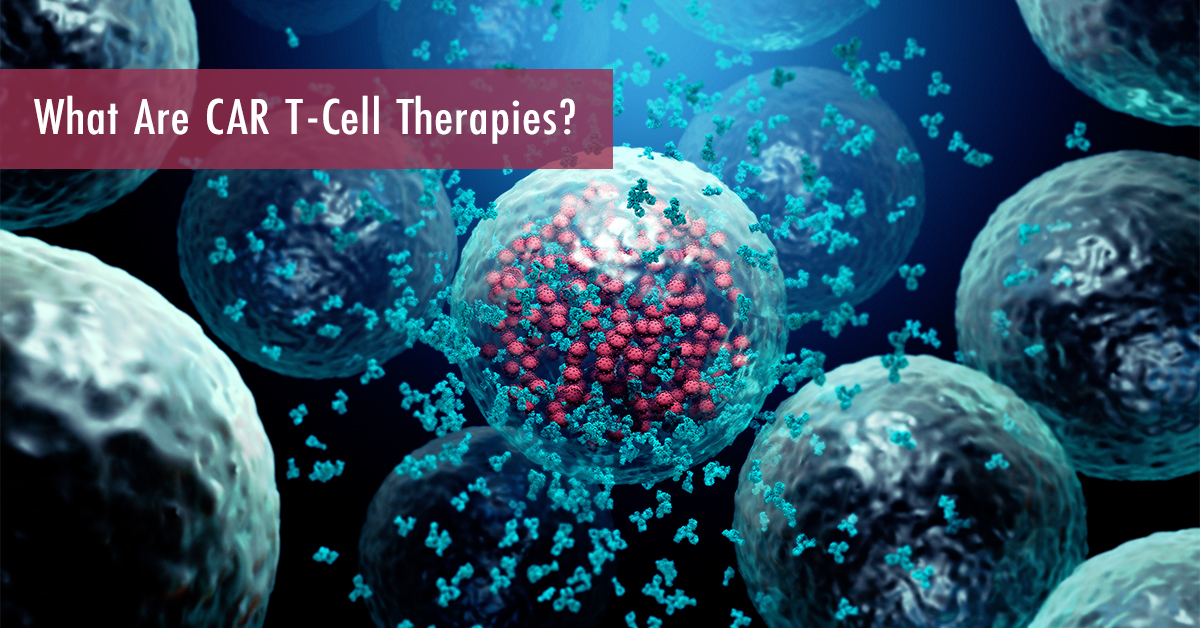CAR-T therapy is one of the most promising treatments for genetic conditions, and specifically provides hope for cancer treatment. Many patients are unfamiliar with what receiving CAR-T therapy is like, however. Here’s what the process of treatment is like for patients.
How Chimeric Antigen Receptor T-Cell Therapy Works
The immune system is constantly monitoring the substances and molecules that flow through the body, and the system is liable to attack any unfamiliar or foreign substance.
CAR-T therapy utilizes the immune system’s propensity to attack foreign substances. The therapy modifies the genes within the immune system’s T cells, so they identify cancerous cells as foreign and attack them.
The full medical name for this therapy is chimeric antigen receptor (CAR) T-cell therapy. The therapy is a form of cell-based gene therapy since it modifies T cells’ genetic code. It’s most commonly shortened to CAR-T therapy.
Specific Antigen and Receptor Proteins
More specifically, T cells identify foreign substances by identifying antigens that these substances have. The T cells then have receptor proteins that attach to the substances’ antigens, and then destroy the foreign substance.
Cancerous cells have antigens, but T cells don’t naturally have the right receptor proteins to destroy cancer. CAR-T therapy edits the T cells so that they have the right receptor proteins, and can thus attach to and destroy certain cancer cells.
This process can be thought of as a lock and key. The antigen is unlocked by the T cell’s key. CAR T-cell therapy modifies the key so that it fits a different lock — essentially picking the lock that cancerous cells have.
The Process of Getting CAR-T Therapy
CAR-T therapy is administered in three stages, two of which directly involve the patient:
- Collecting T Cells: White blood cells are drawn from the patient, so that T cells can be sourced from the white blood cells (which include T cells).
- In order to withdraw white blood cells, the patient normally assumes a reclined or supine position. Two separate IV lines are then inserted. One line draws blood, and the other returns blood. Between the two lines, a machine separates out the white blood cells. The process usually takes 2 to 3 hours, and calcium might be administered through one of the IVs.
- Making CAR T Cells: T cells are separated from the other white blood cells. Only the T cells are sent to a lab, where the receptor protein for a specific antigen is inserted. Additional T cells with the receptor protein can be grown from the initial sample.
- Receiving CAR T Cells: The patient receives the grown CAR T cells, which have the appropriate receptor protein. Chemotherapy might be administered shortly before receiving an infusion of the cells, so that the number of other immune cells is reduced. Fewer other immune cells will allow the CAR T cells needed to fight cancer to activate better. The CAR T cells will replicate on their own once they begin destroying the cancer cells.
CAR-T Cell Therapy Can Be Effective
Multiple studies have shown that CAR-T cell therapy is effective at treating various cancers. It’s approved for fighting several cancers, and clinical trials for other cancers are underway. More and more patients who have cancer can expect to go through a process such as described above, and an increasing number of patients can hope for a recovery from their cancer.
Related posts
HOT TOPICS
Recent Posts
- What Is The Use of Palletizing Cobots? November 14, 2023
- Python Programming & Its Importance In Machine Learning September 27, 2023
- How email encryption works September 14, 2023
- How to create a custom WordPress website maintenance plan May 23, 2023
- Social Media Marketing – How It Can Benefit Your Business May 13, 2023
- Benefits Of Modern Software For Fleet Tracking May 3, 2023
Archives
- November 2023
- September 2023
- May 2023
- April 2023
- March 2023
- February 2023
- December 2022
- November 2022
- October 2022
- September 2022
- August 2022
- July 2022
- June 2022
- May 2022
- April 2022
- February 2022
- December 2021
- November 2021
- October 2021
- September 2021
- August 2021
- July 2021
- June 2021
- May 2021
- April 2021
- October 2020
- September 2020
- August 2020
- July 2020
- June 2020
- May 2020
- April 2020
- February 2020
- January 2020
- May 2019


